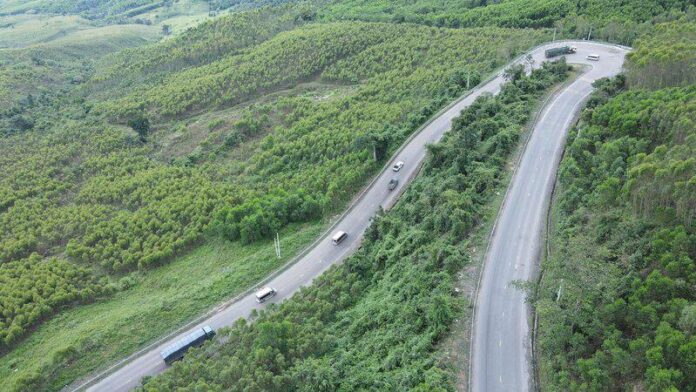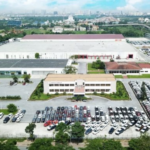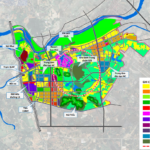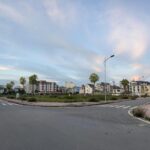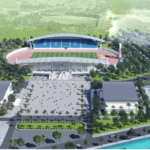Investment Trends Riding the Wave of Infrastructure Development
On the morning of June 12, 2025, the National Assembly passed a resolution on the rearrangement of provincial-level administrative units, and the merger of Gia Lai and Binh Dinh provinces is not just an administrative change but also a catalyst for a new infrastructure and economic platform in the region.
Following the merger announcement, capital and businesses from Gia Lai are shifting towards Quy Nhon to leverage improved trade and administrative connections, thereby enhancing their competitiveness and integration into the national value chain.
A significant driver of this trend is the upcoming Quy Nhon-Pleiku expressway, which is expected to begin construction in 2025 and be completed by 2029. This route will reduce travel time, lower logistics costs, and facilitate the transport of goods and investment attraction between the Central Highlands and the coastal region.
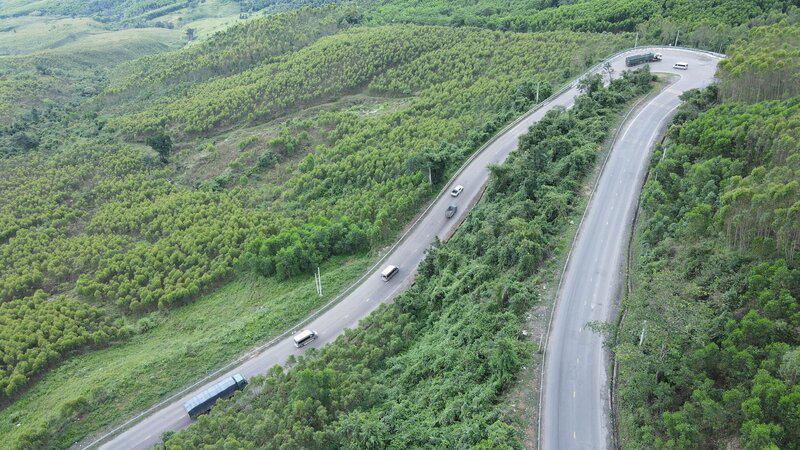
National Highway 19 in Binh Dinh Province. Source: Quy Nhon Iconic
Additionally, National Highway 19, a vital artery connecting Quy Nhon Port with the Central Highlands and the Le Thanh border gate, continues to play a strategic role in the East-West economic corridor. The well-established transport system positions Quy Nhon as a priority investment destination post-merger.
Industrial Zone Development Attracts Capital and Urbanization
One notable destination in Quy Nhon is the Nhon Hoi Industrial Zone, located in the Nhon Hoi Economic Zone and spanning 630 hectares on Phuong Mai Peninsula. This strategic location offers convenient connections to the Central Highlands and the city center via Thi Nai Bridge and National Highway 19.
As of 2024, Nhon Hoi has attracted 15 investment projects with a total value of approximately $357 million from countries such as China, Singapore, and Japan in fields like pharmaceuticals, high technology, food processing, textiles, and automobile assembly.
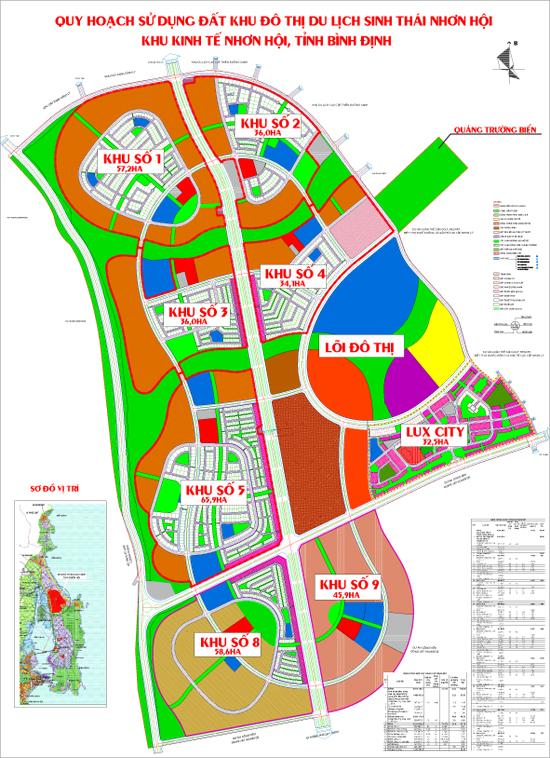
Map of Nhon Hoi Industrial Zone. Source: Nhon Hoi Industrial Zone
According to the Binh Dinh Provincial People’s Committee, the industrial zone is highly regarded for its modern infrastructure, attractive tax incentives, and long-term land leases of up to 50 years. The occupancy rate in the central region’s industrial zones has reached 80%, indicating a substantial demand for housing, services, and urban infrastructure for workers, experts, and engineers. This drives capital into commercial real estate and reshapes Quy Nhon’s urban landscape according to the “industry-service-sea” model.
Quy Nhon: The New Destination for Capital as it Descends from the Mountains to the Sea
Post-merger, Quy Nhon is emerging as a new growth pole due to a combination of factors: its role as an administrative center, strategic transport hub, industrial development, and ample land reserves. Land prices here remain 50-70% lower than in coastal cities like Nha Trang and Da Nang, offering a significant advantage to investors seeking long-term potential.
Quy Nhon also stands out for its clean living environment, diverse natural landscapes, and rapid urbanization. According to batdongsan.com.vn, Quy Nhon real estate is attracting strong interest from various regions: 24% from Ho Chi Minh City, 22% from local and neighboring residents, 16% from Hanoi, and 10% from foreign investors.
The wave of population and business migration from Gia Lai post-merger will create new demand for real estate in Quy Nhon, especially in areas with well-developed infrastructure, proximity to industrial zones, and key transport routes.
Quy Nhon Iconic: The New Crossroads of Trade and Investment Destination
Strategically located at the northwestern gateway to Quy Nhon City, Quy Nhon Iconic occupies a prime position on the new National Highway 19, the lifeline connecting the sea port with the Central Highlands and Nhon Hoi Economic Zone. From the project, it takes only 10-12 minutes to reach Nhon Hoi Industrial Zone, the region’s new economic center, via a comprehensive transport network. This strategic location attracts residents and experts relocating from the industrial zone, a demographic with a high demand for quality housing and comprehensive amenities.
With a scale of 43.16 hectares, the project is meticulously planned and features a range of amenities, including a 2km riverside park, an onsite school, and six large-scale utility clusters. Quy Nhon Iconic caters not only to the residents within the project but also to the surrounding community, especially professionals and entrepreneurs working in the industrial zone.
In addition to its residential value, the project offers significant business potential due to the high traffic flow from the connecting routes between the industrial zone and the sea port. The shophouses along National Highway 19 are ideal for cafes, restaurants, mini hotels, offices for lease, and convenience stores serving residents and passersby.
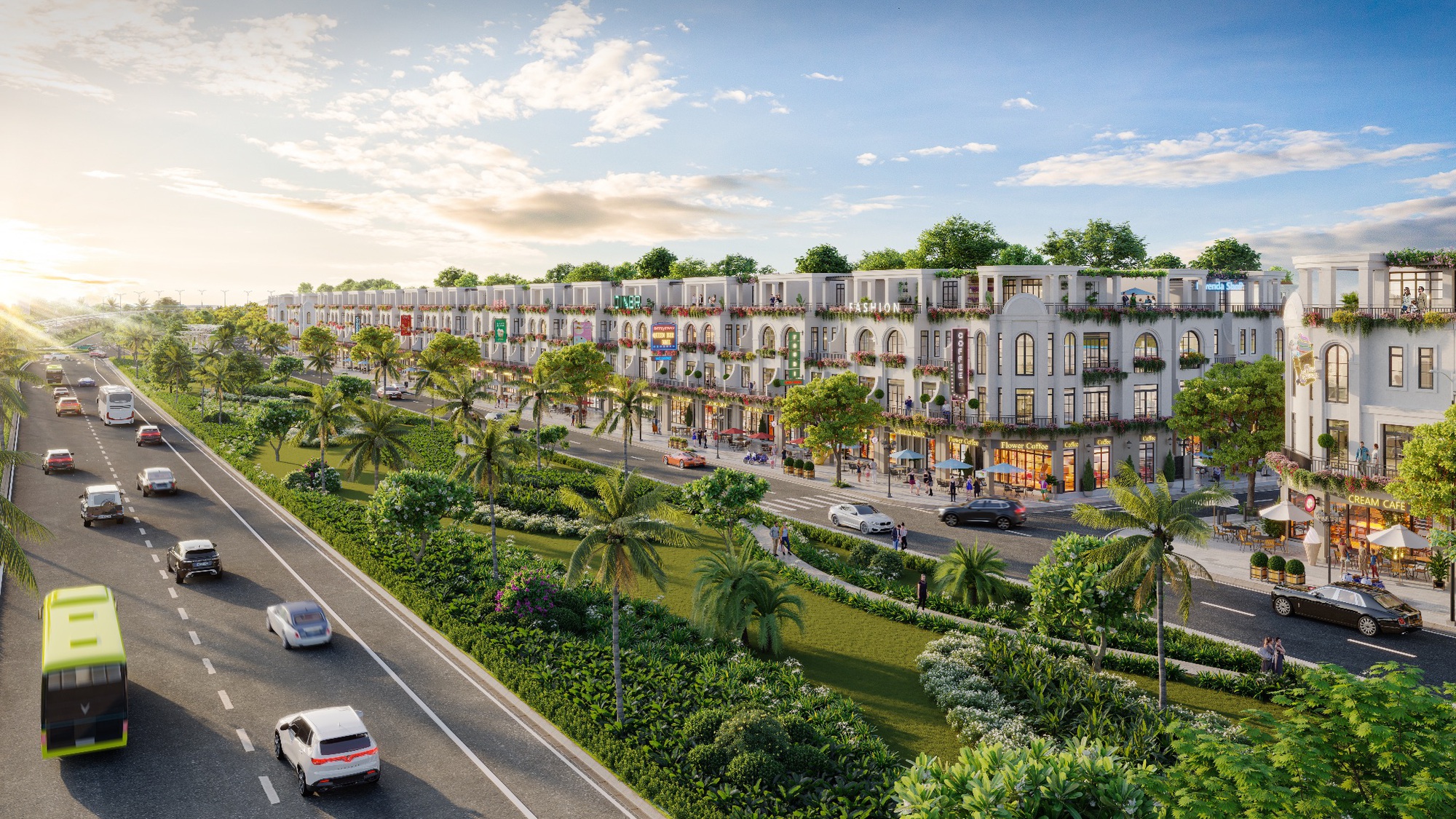
The shophouse row in the Quy Nhon Iconic township boasts potential for business, residence, and leasing. Source: Realty Holdings
As Quy Nhon lacks a supply of modern commercial townships near industrial zones, the “live-work-play” products in Quy Nhon Iconic become a strategic choice, generating sustainable income for investors riding the wave of development.
The Billion Dollar Resort: Unveiling the Mastermind Investors Behind the Vân Đồn Project
The People’s Committee of Quang Ninh Province has just approved a colossal investment project for an integrated tourism, entertainment, and premium resort complex, along with a golf course and residential area in Monbay Van Don. This ambitious venture boasts a staggering total investment of over VND 24,883 billion.
The Green City Rises: Thanh Hoa Approves Master Plan for 2,000-Hectare Urban Development Near Tho Xuan Airport
The People’s Committee of Thanh Hoa province has approved the detailed planning proposal for the Lam Son – Sao Vang urban area in Tho Xuan district, as outlined in Decision No. 1703/QD-UBND. This decision paves the way for the development of a vibrant and well-planned urban hub, known as Subdivision No. 02, which will undoubtedly enhance the region’s economic and social landscape.
A New 5,500-Seat Stadium to Grace Hanoi’s Suburbs in a Few Months
This is an impressive stadium, a true architectural marvel with its retractable roof. The design is a stunning feat of engineering, a testament to human ingenuity. With the ability to host a multitude of events, from thrilling sports matches to captivating concerts, this venue is a versatile space, an entertainment hub, and an iconic landmark.


























